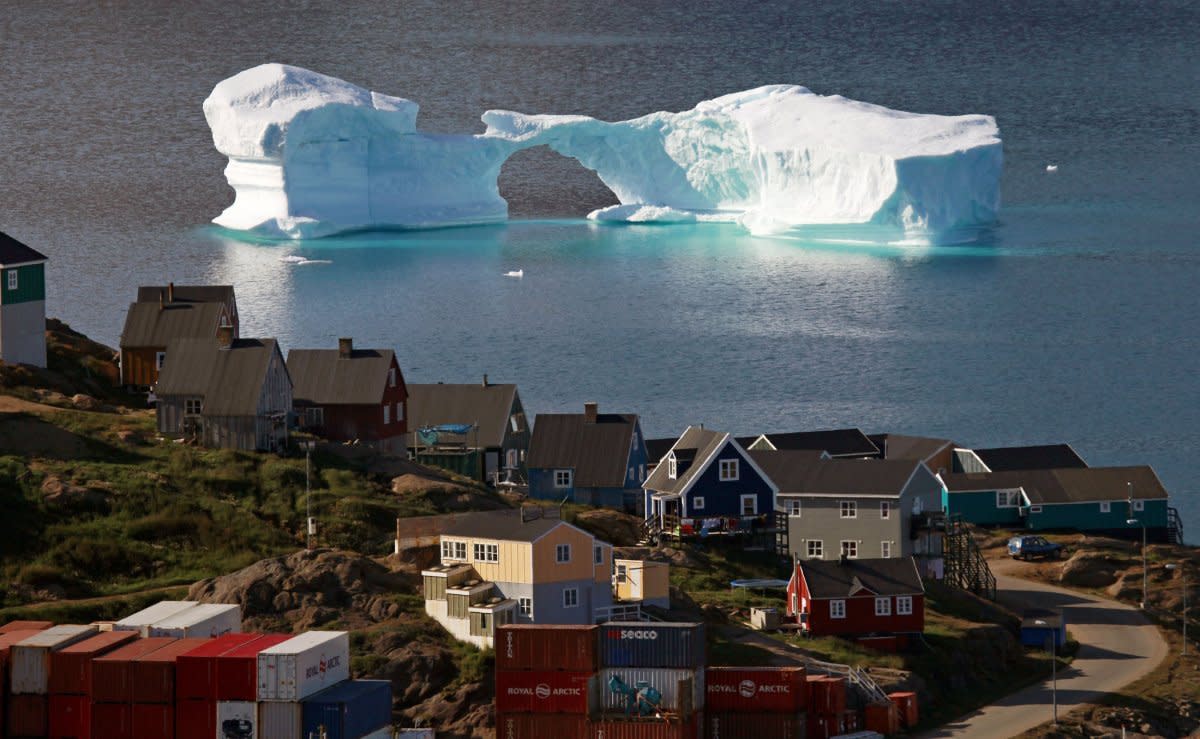The Arctic is melting — and it shows no sign of returning to being reliably frozen

Bob Strong/Reuters
2017 was the second-hottest year on record for the Arctic, according to NOAA's Arctic Report Card.
Even though the summer wasn't as hot as 2016's scorcher, the greening and melting processes continued.
As the region changes, older multi-year ice that helps it bounce back is disappearing.
There's a "new normal" in the Arctic — and it isn't a frozen one.
That's according to the 2017 Arctic Report Card released Tuesday by the National Oceanic and Atmospheric Administration (NOAA).
Even though 2017 didn't shatter as many warming records as 2016 did, "the Arctic shows no sign of returning to the reliably frozen region it was decades ago," according to a news release about the report.
It was the second-warmest year the Arctic has ever experienced. But the past summer was relatively cool in the Arctic when compared to the summer of 2016, which was the hottest the world has ever seen. This contributed to more snow cover in Eurasia and less melting from the Greenland ice sheet than during the previous nine summers — signs that on the surface might seem hopeful.
But the disconcerting thing, according to the report, is that the overall warmth the region has experienced over the past decades seems to have triggered a transformation process that continued through the summer of 2017. The Arctic is changing, becoming greener as ice melts.
Here are some highlights from the report:
Surface air temperatures in the Arctic were the second-warmest from October 2016 to September 2017 that they have ever been, behind only 2016.
The winter ice maximum on March 7 was the lowest on record (which goes back to 1979), 8% lower than the average ice maximum between 1981 and 2010.
Sea temperatures are climbing: surface temperatures in the Barents and Chukchi Sea are 7.2 degrees Fahrenheit above the average.
Vegetation and greening is taking over tundra, accompanying record permafrost melting.
One of the biggest changes that NOAA researchers have observed has to do with the age of sea ice. Older sea ice tends to be thicker, stronger, and better able to bounce back from unfavorable conditions. But there's a lot less of it now than there used to be.
Very old ice (greater than four years old) made up 16% of the ice pack in 1985 but was only .9% of the ice pack in March of 2017. Ice that was multiple years old made up 45% of the Arctic cover in 1985. Now, only 21% of the ice is that old — 79% is just year-old ice.
The NOAA animation below documents the change. In the animation, ice that has persisted for 9 or more years is white, seasonal ice is darkest blue.
Youtube Embed:
http://www.youtube.com/embed/c6jX9URzZWg
Width: 560px
Height: 315px
The Arctic is warming twice as fast as the world in general — something that's particularly concerning because a frozen Arctic helps moderate temperatures in the rest of the world by reflecting solar radiation (and the heat that comes with it) back into space.
The Arctic may even be melting faster than we realize. At one Alaska weather station, NOAA scientists recently noticed that the instruments used to measure temperature had stopped reporting data because temperatures had gone up so rapidly that the computers decided they couldn't be accurate — but they were.
NOW WATCH: A Navy SEAL explains how to make your home more secure
See Also:

 Yahoo News
Yahoo News 

